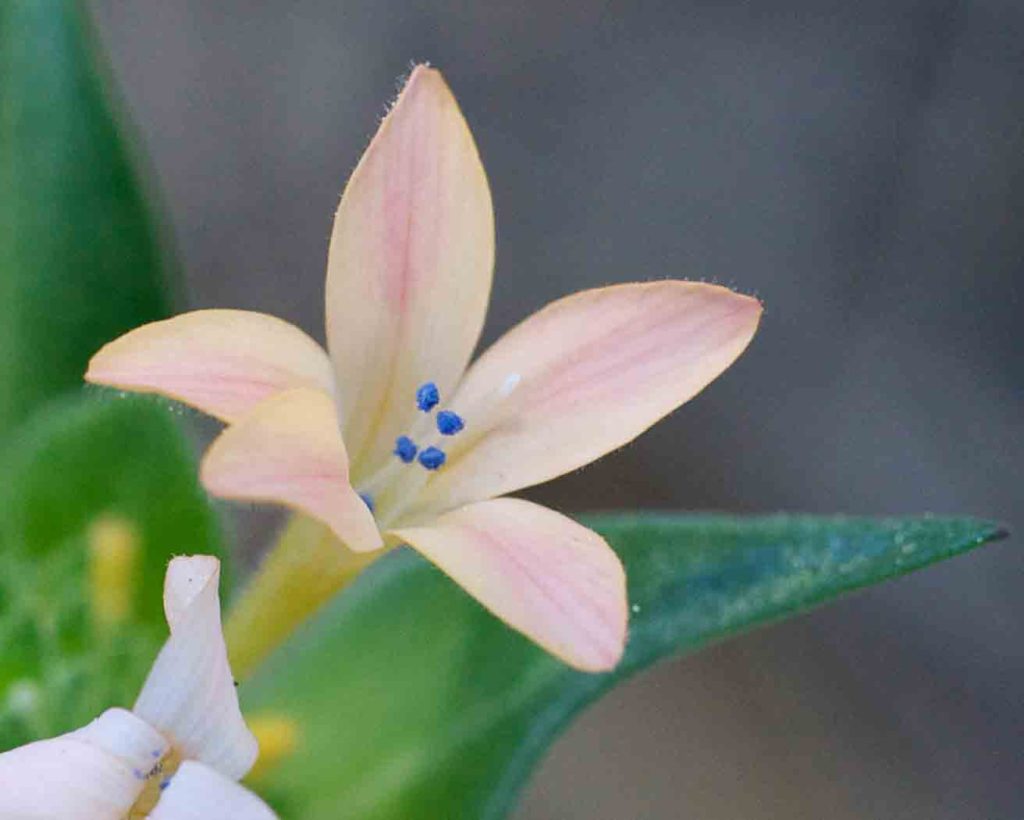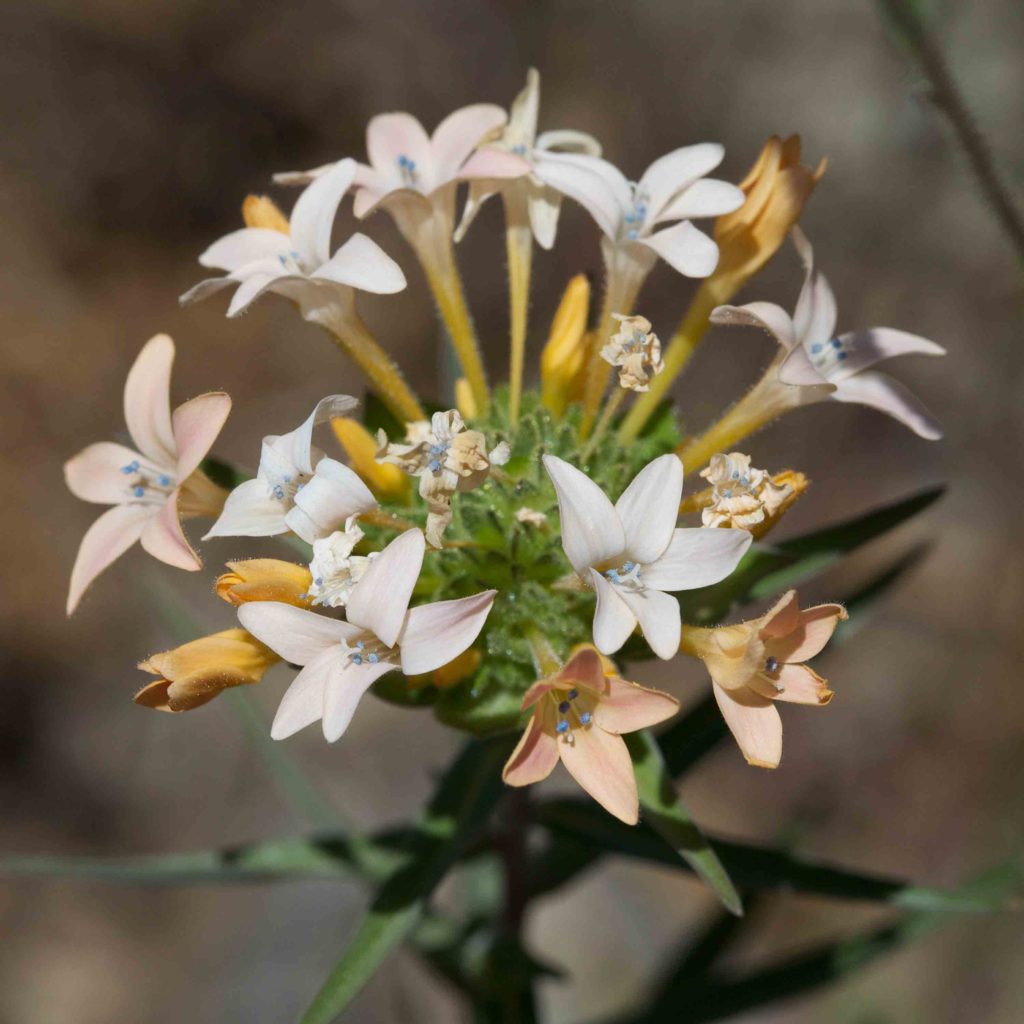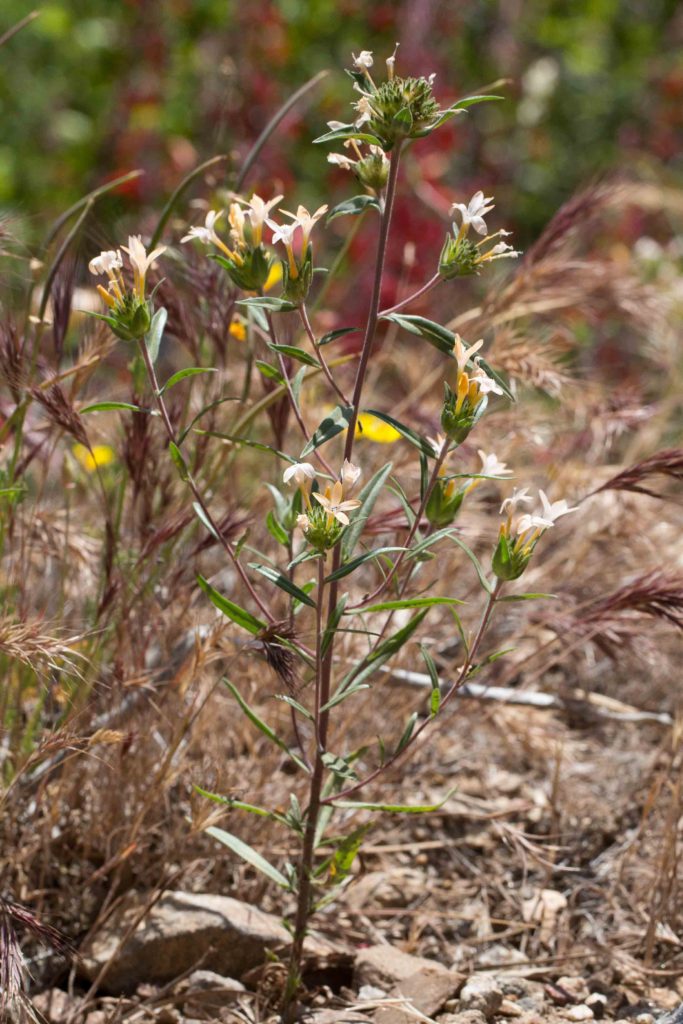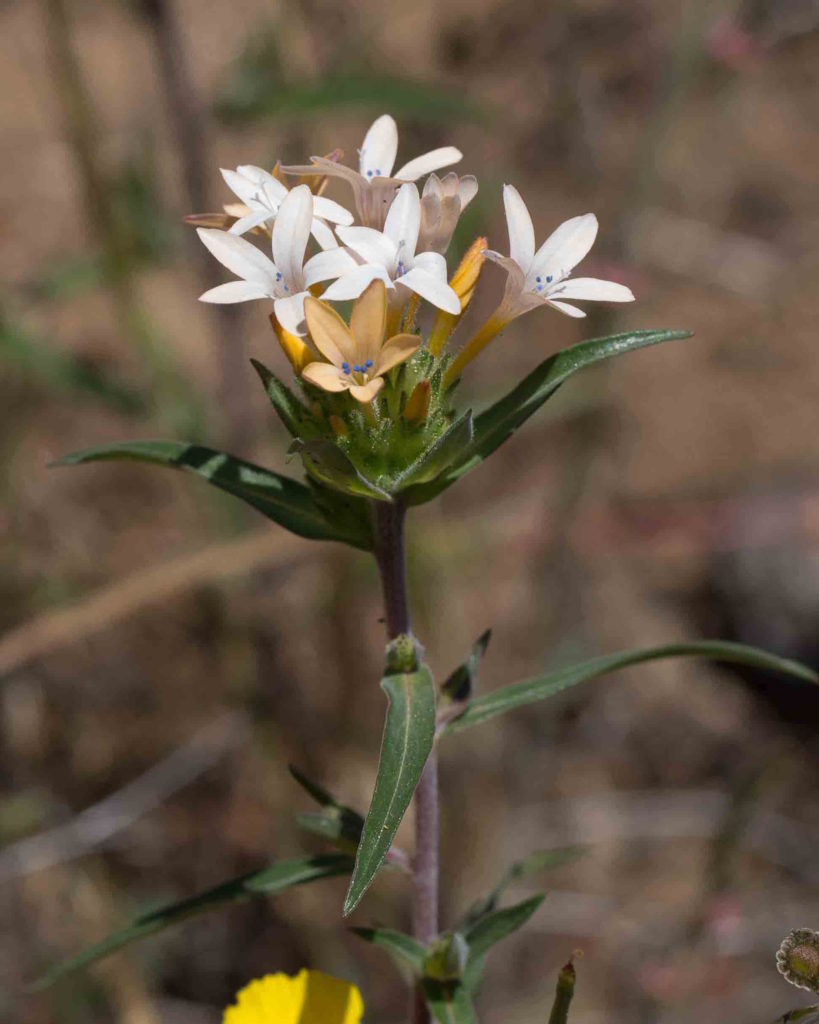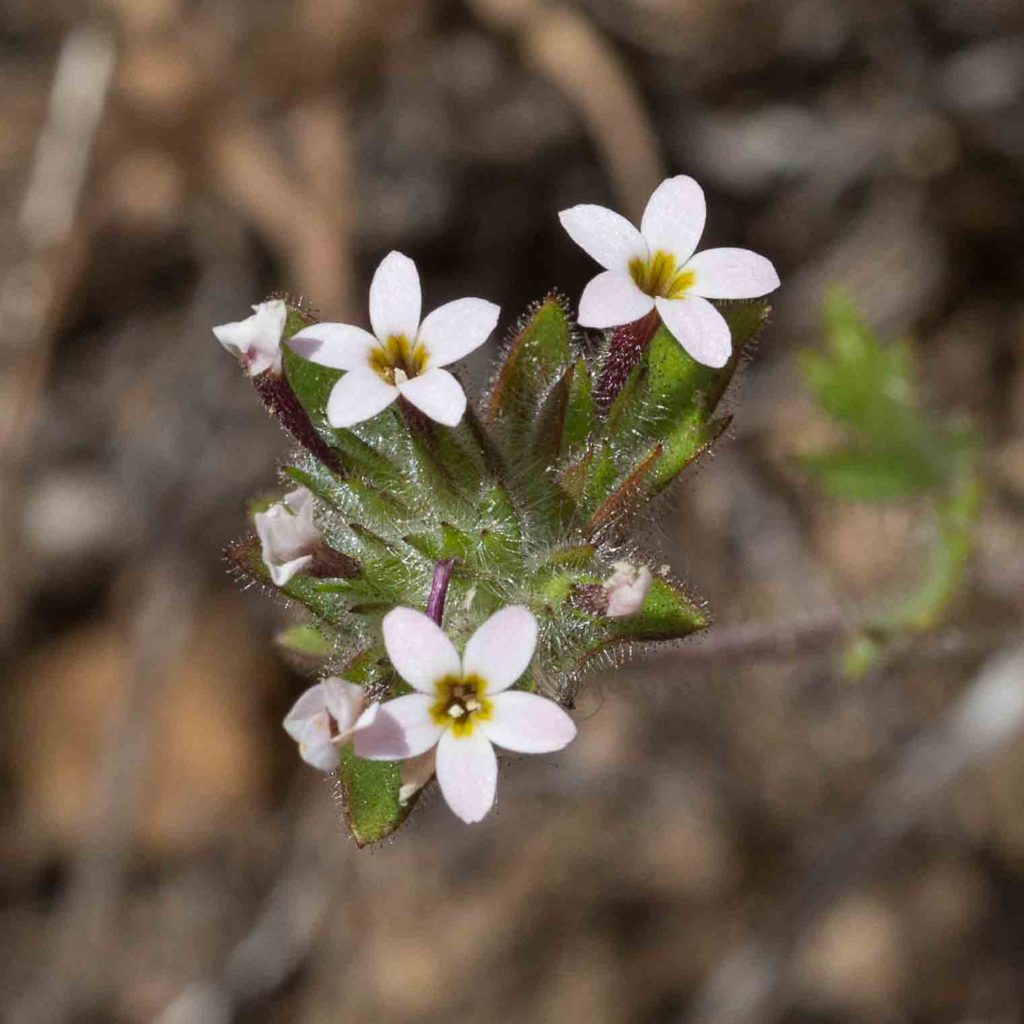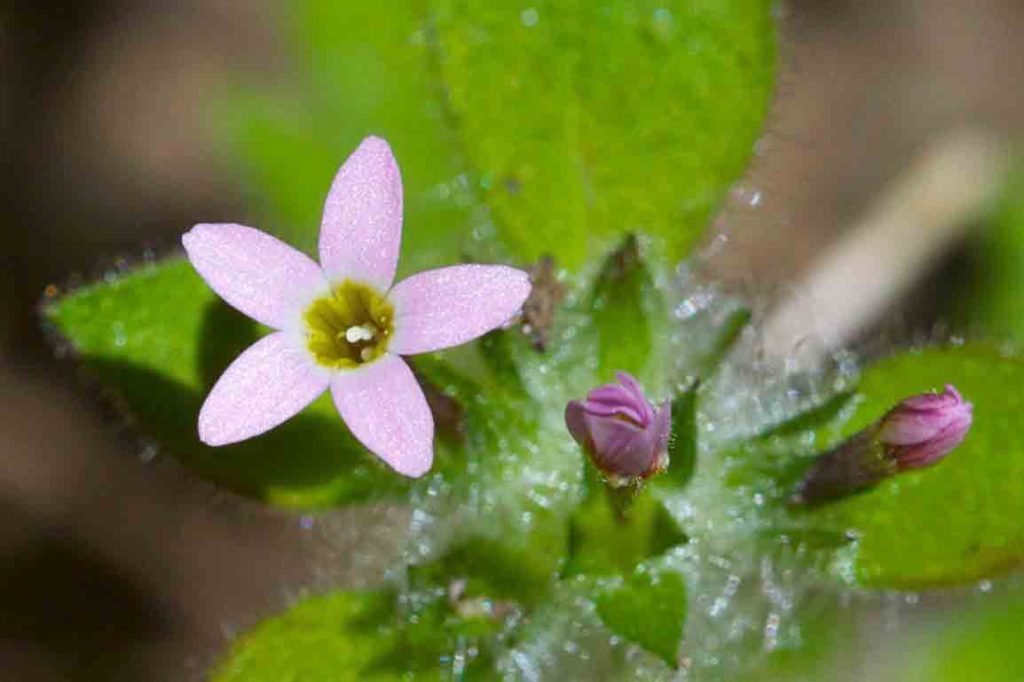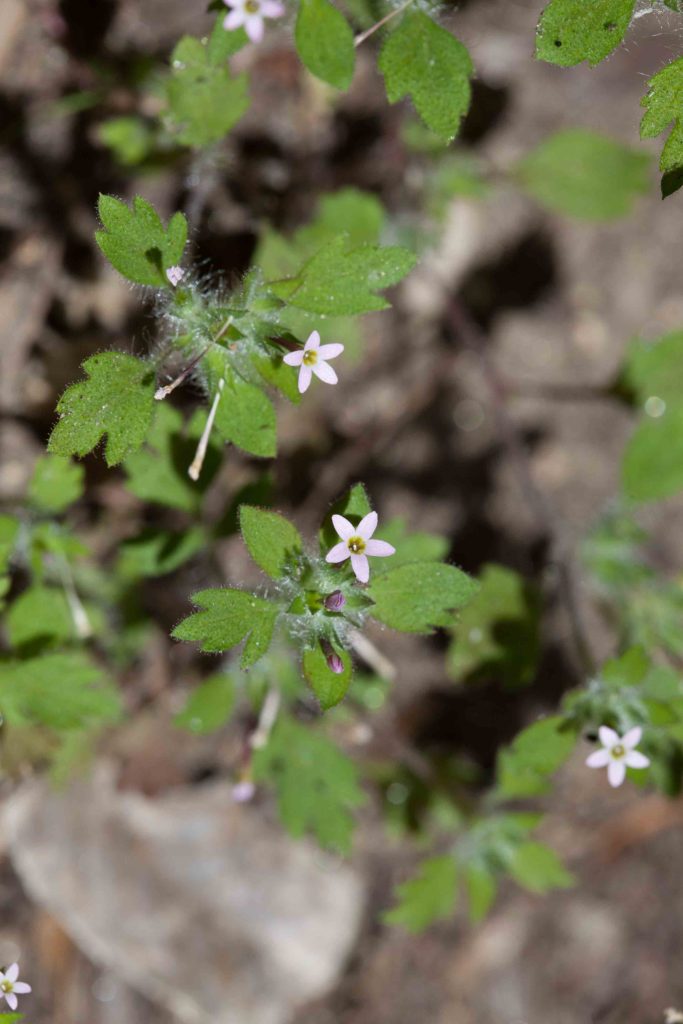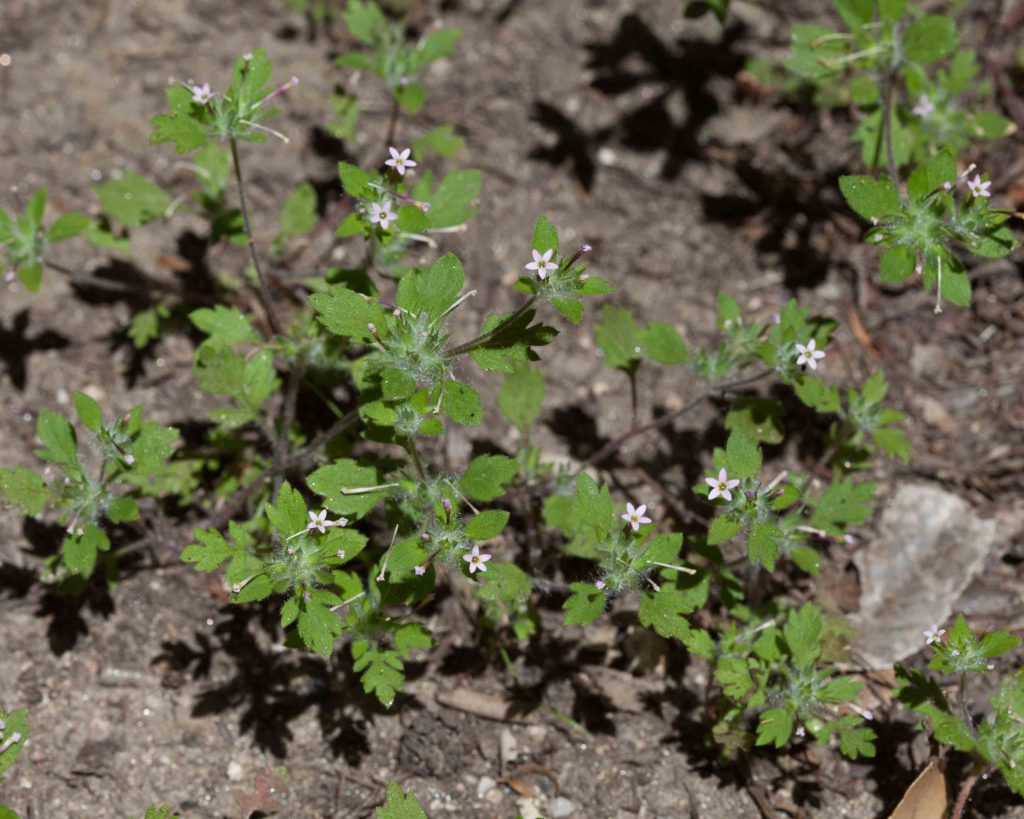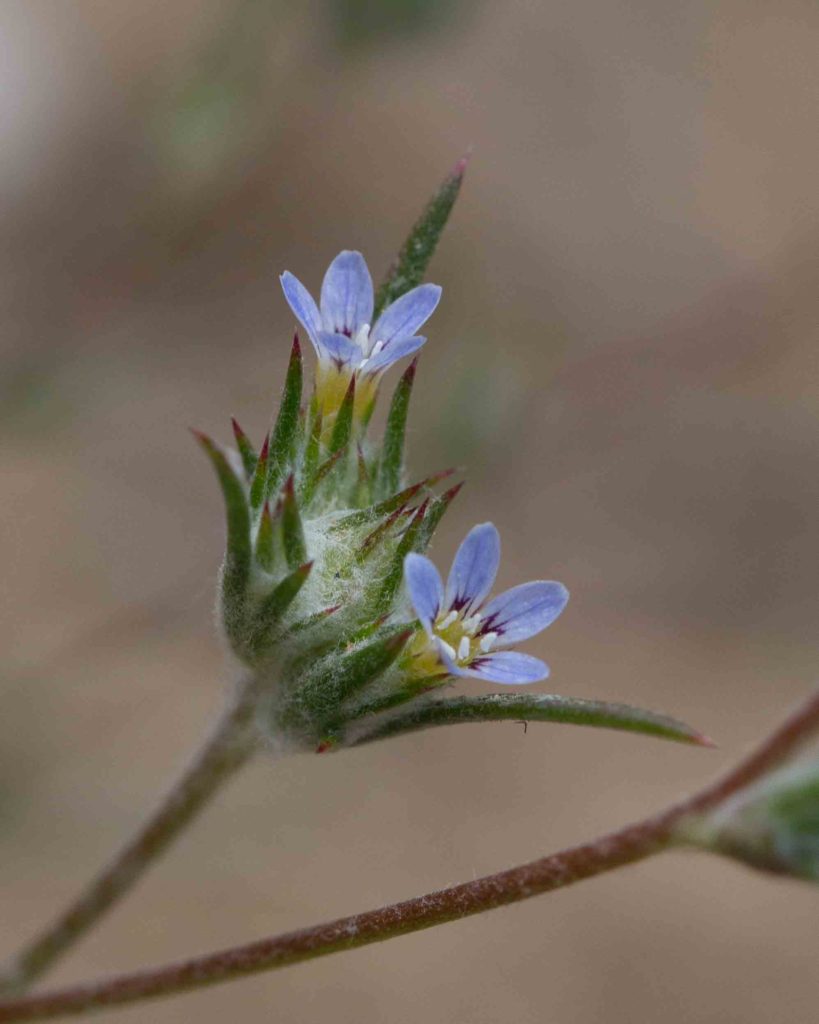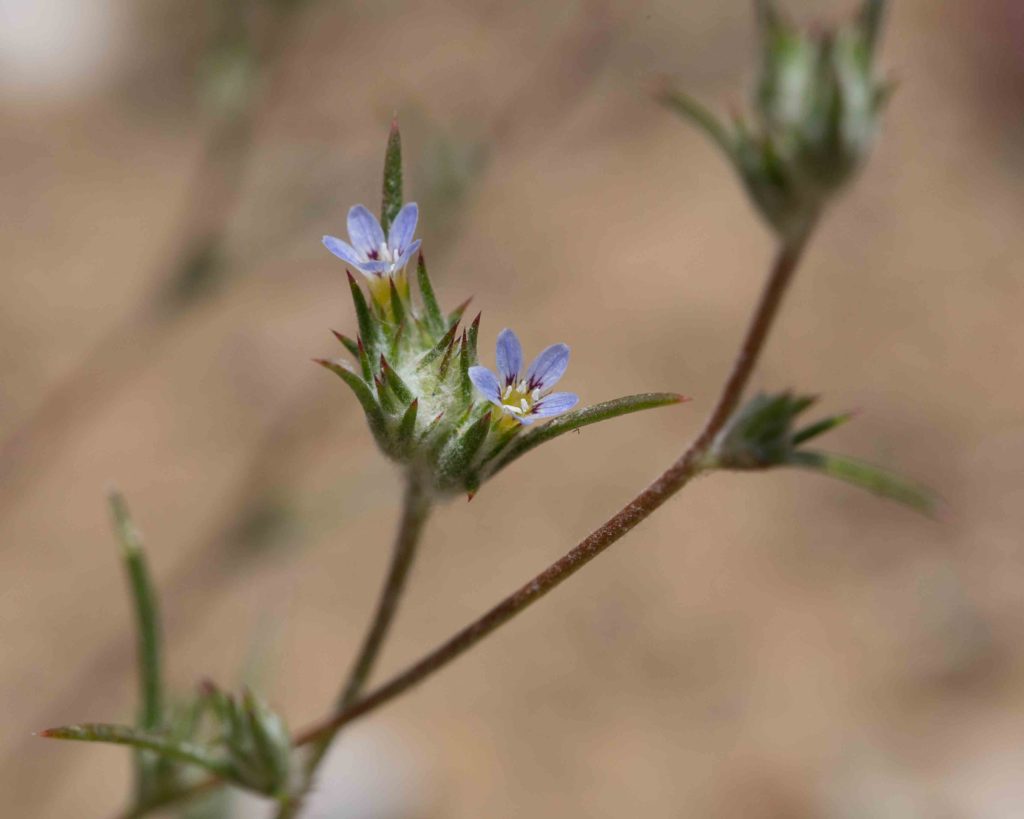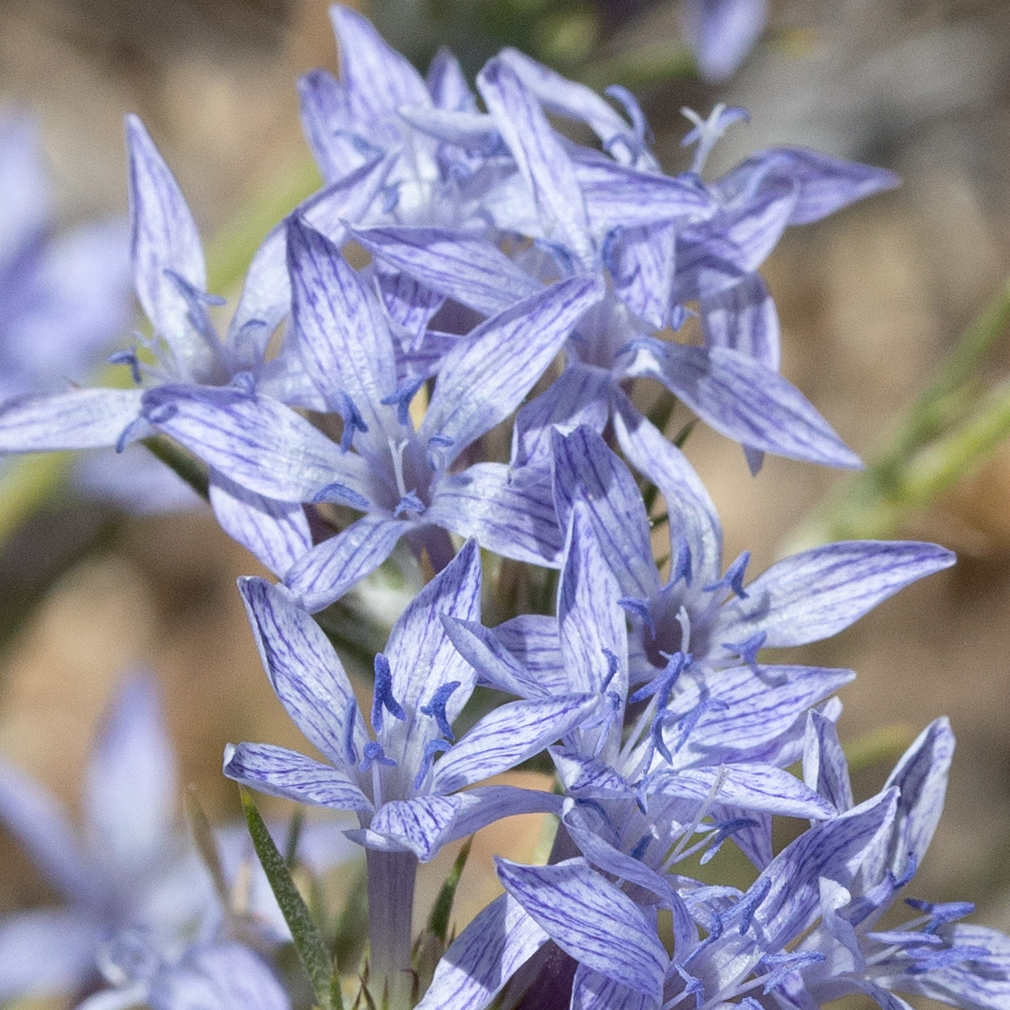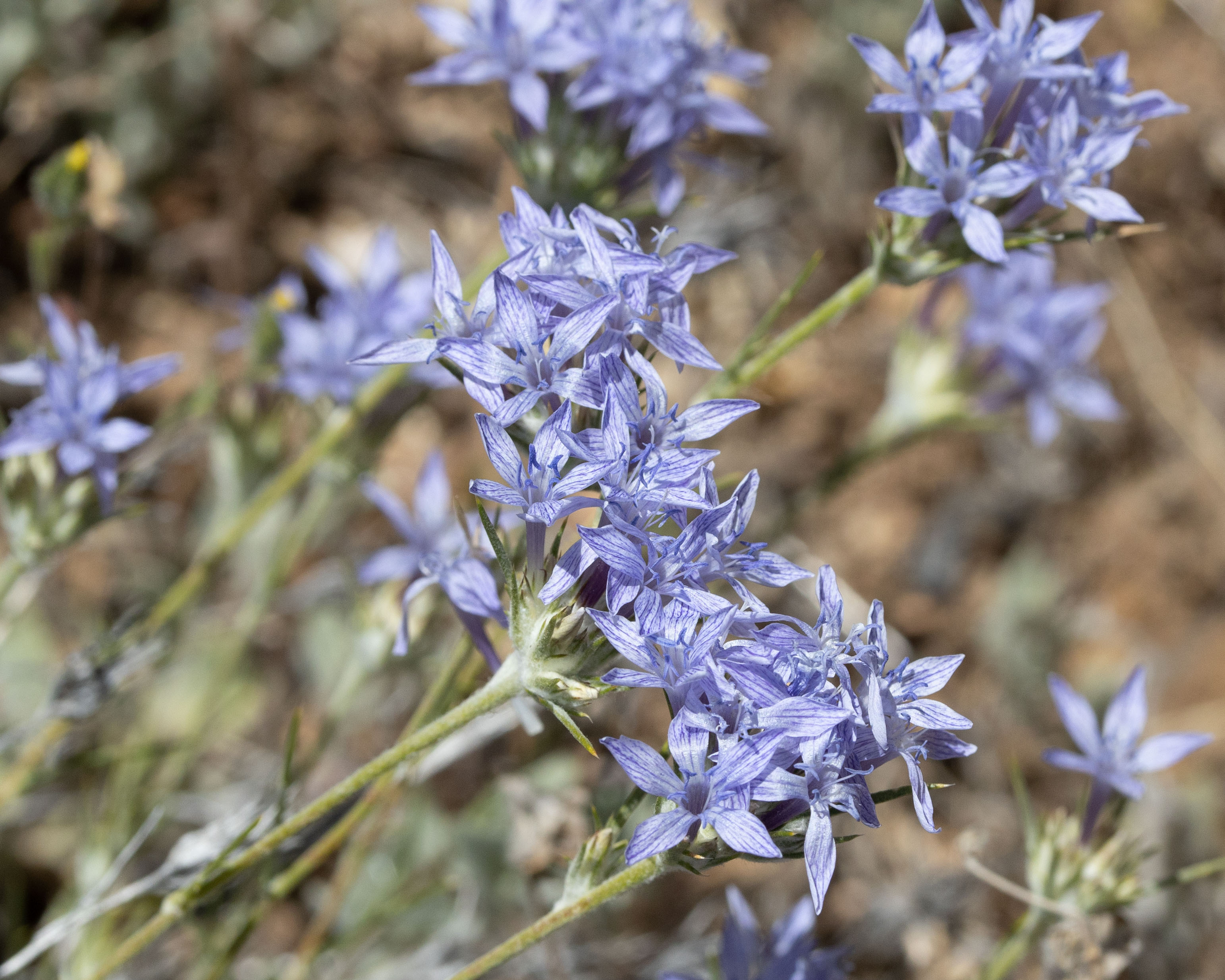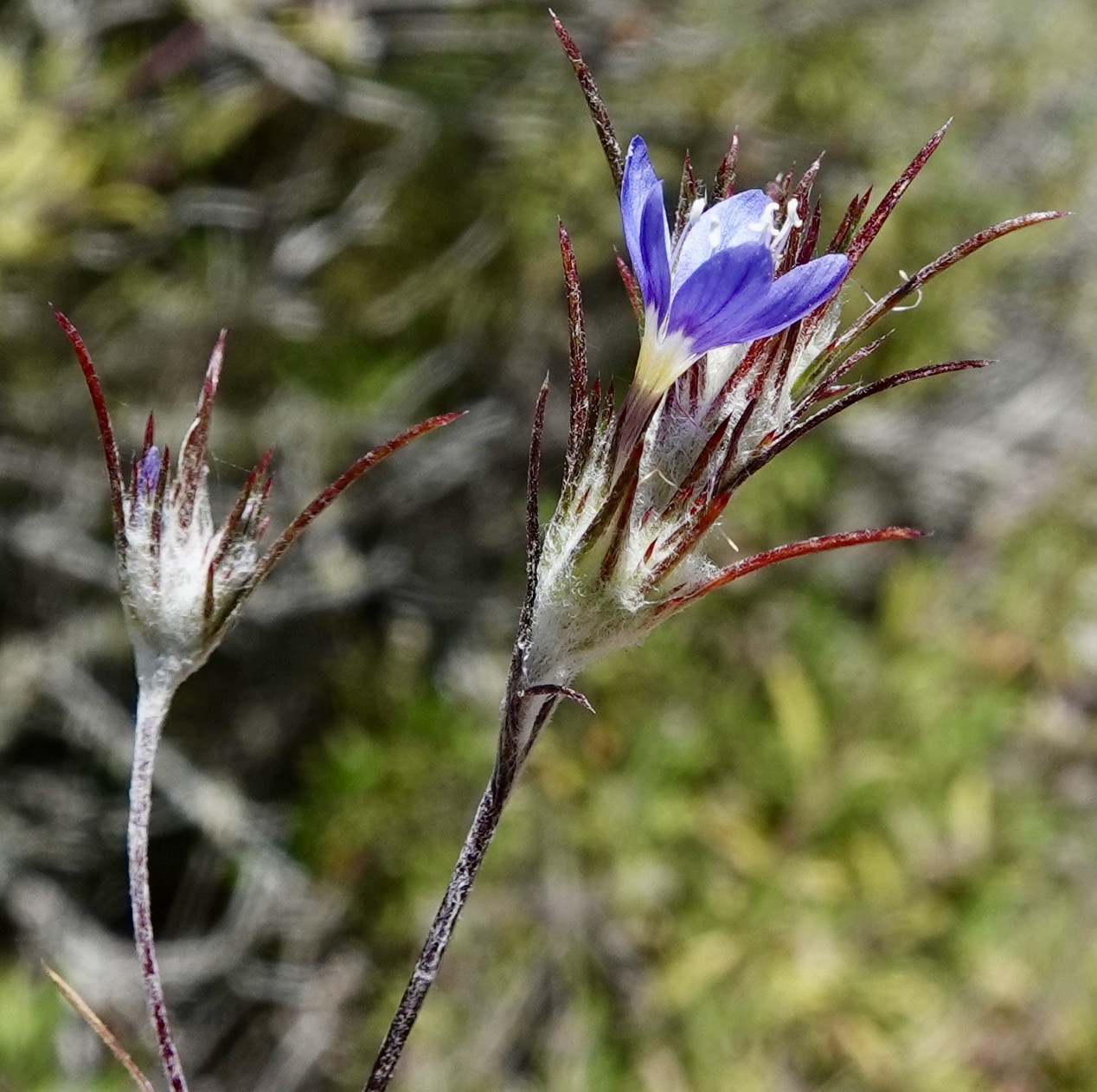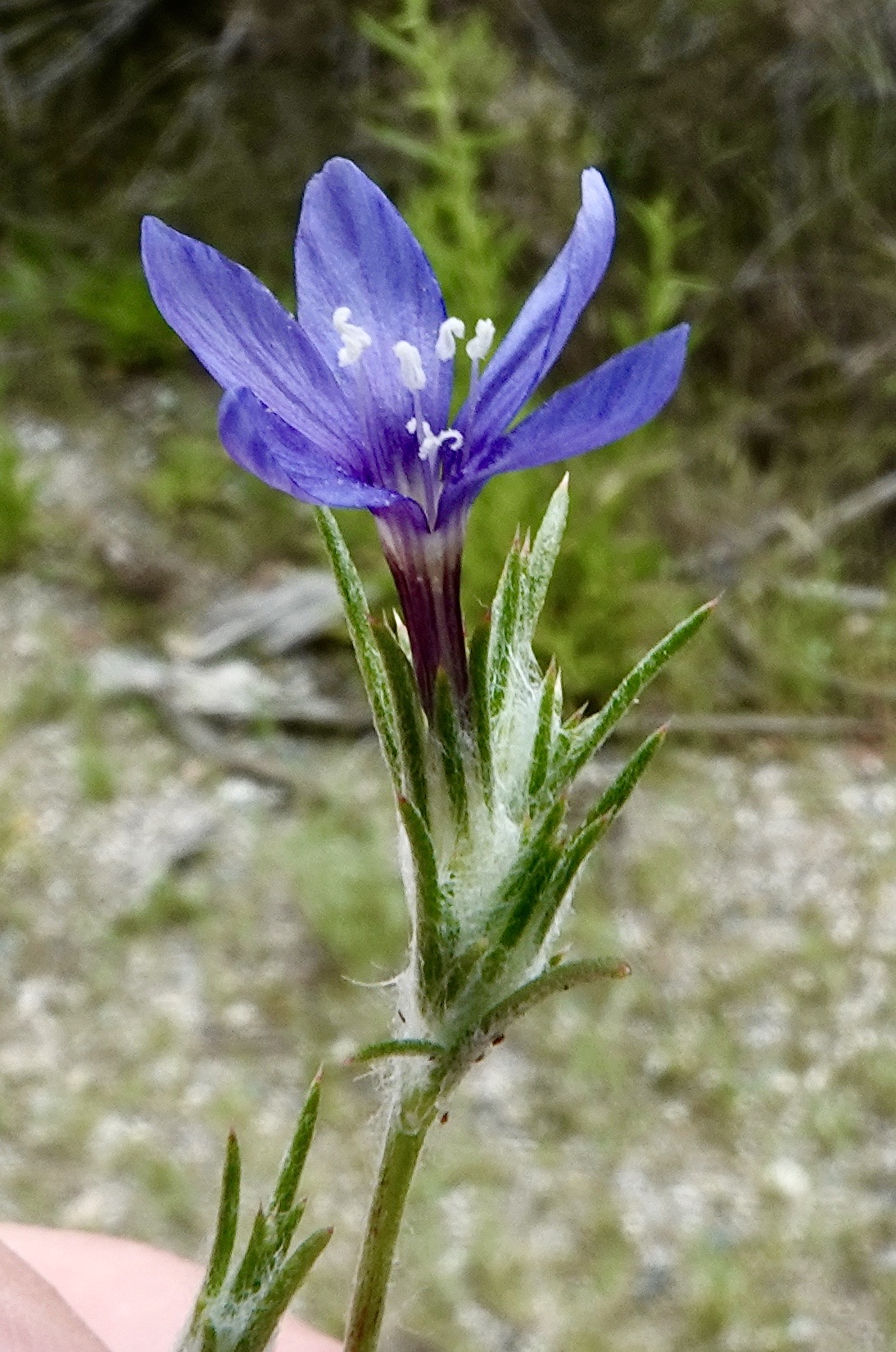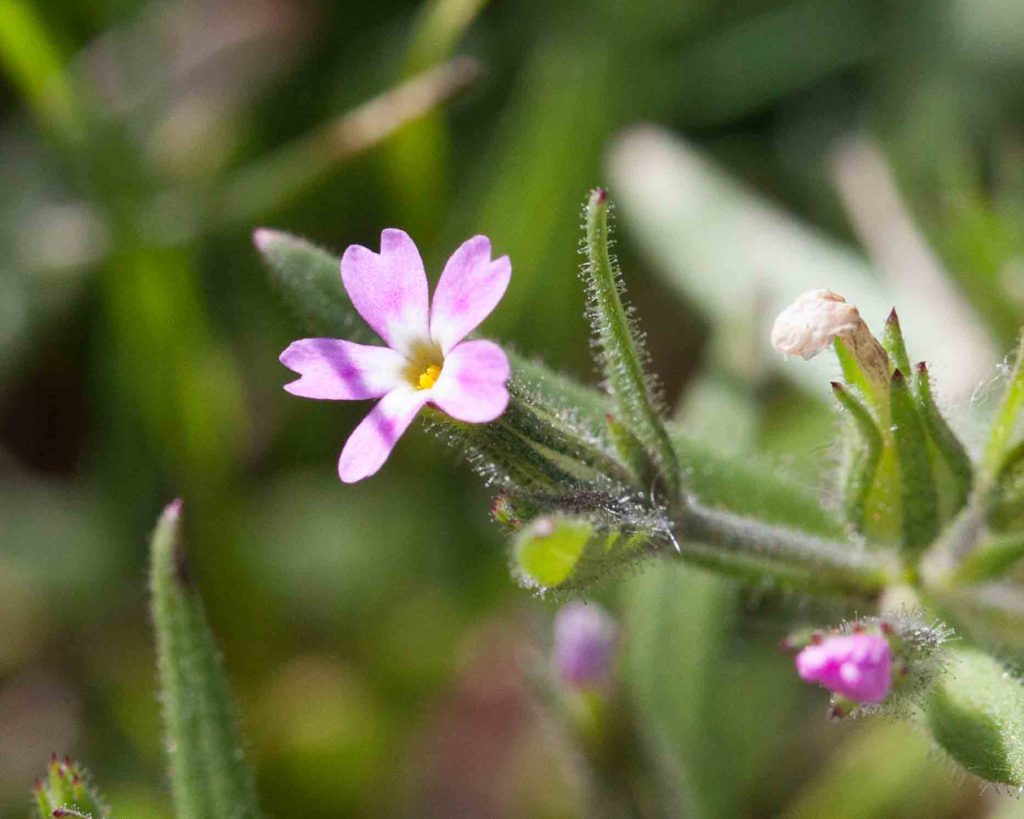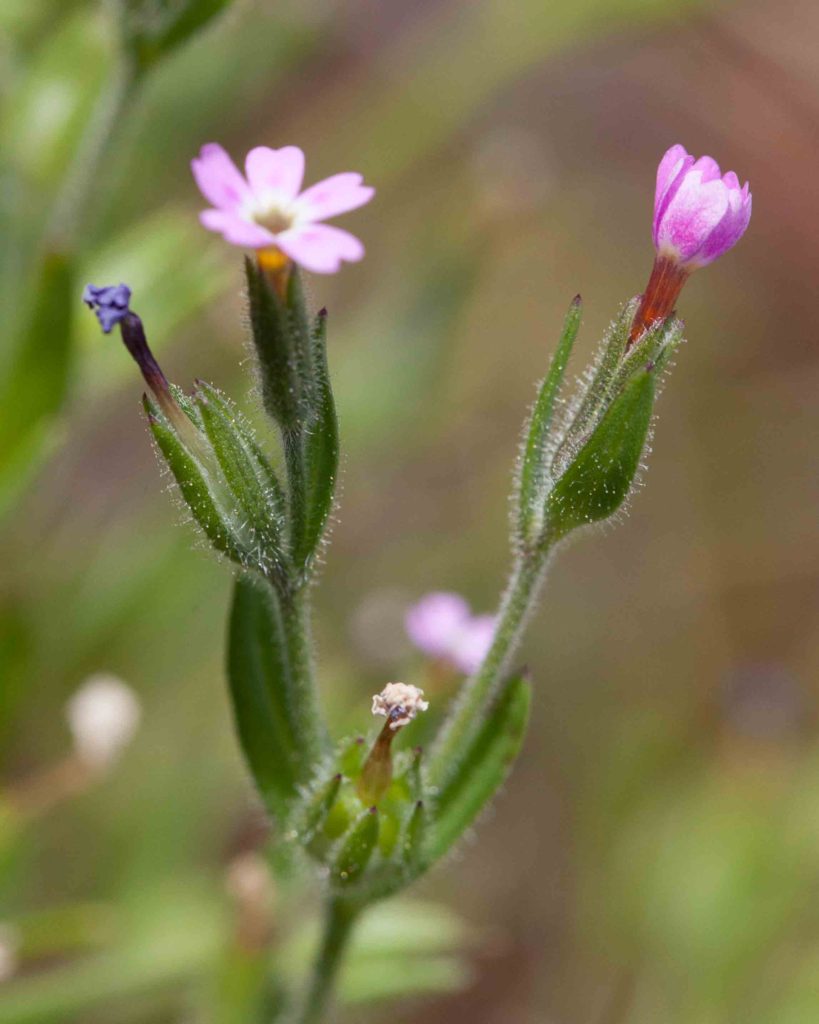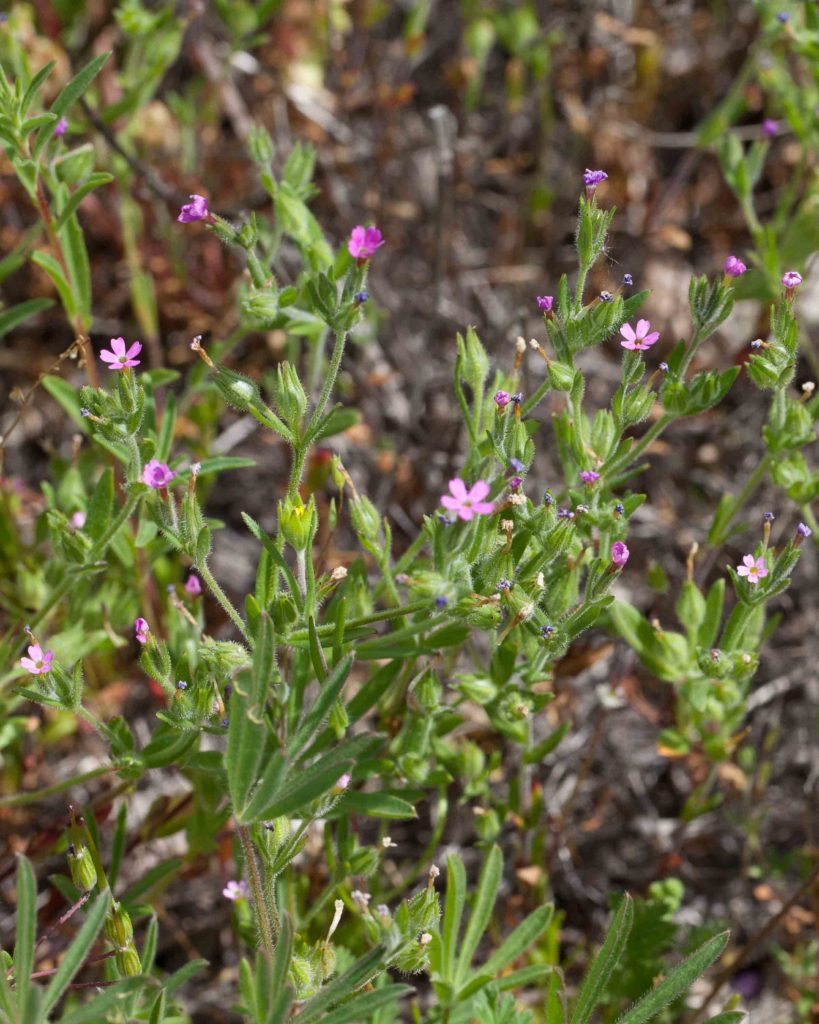Polemoniaceae: Phlox Family — Collomia, Eriastrum & Microsteris
The beautiful flowers in the phlox family are mostly tubular. Instead of distinct petals, they have spreading lobes, fused to the tube at their base. They may be bell-shaped with gradually spreading lobes, or funnel-shaped, with a slender tube and abruptly spreading lobes. Typically, there are 5 lobes, with 5 stamens attached to the tube, and 3 stigmas on the pistil.
Large-flowered Collomia – Collomia grandiflora
Blooms:
Apr–July
Plant Height:
10–90 cm
Flower Size:
Medium cluster
Origin:
Native
Habitat:
Dry open or wooded slopes
Notes:
This is a comparatively tall plant. Its reddish stem may be leafy and may be branching. The inflorescence is a cluster of tubular flowers, 8–15 mm long, with lobes about 10–15 mm across. Flower color is variable: yellow, orange, apricot or pink, fading to white. Pollen is blue. Cauline leaves are lanceolate to linear.
Variable-leaved Collomia – Collomia heterophylla
Blooms:
Apr–June
Plant Height:
5–20 cm
Flower Size:
Small-medium
Origin:
Native
Habitat:
Shady places in chaparral and open woodland
Notes:
This is a low growing, spreading plant. Its flowers are less than half the size of Large-flowered Collomia (Collomia grandiflora, see above), about 10–15 mm long and 5 mm across. They have a yellow to light pink tube (occasionally dark pink-purple), a yellow to white throat and a light pink to white corolla. Leaves are glandular-hairy, the lower leaves pinnate or bipinnately lobed and the upper lobed or entire.
Pretty Blue Woollystar – Eriastrum calocyanum
Blooms:
May–July
Plant Height:
4–25 cm
Flower Size:
Small
Origin:
Native
Habitat:
Inner Coast Ranges above 400 m
Notes:
This delicate eriastrum has small, light to dark blue, funnel-shaped flowers, often with a reddish or purple spot at the base of the lobes. The flower tube is white, cream or yellow. The corolla is 7–10 mm across, with stamens that barely extend beyond the sinuses (i.e. the base of the lobes). This is found only in the southeastern parts of the county.
Note: Matthews and Mitchell’s The Plants of Monterey County includes this as E. wilcoxii * (Coast Range Eriastrum)
Perennial Woollystar – Eriastrum densifolium subsp. elongatum
Blooms:
June–Sept
Plant Height:
20–30 cm
Flower Size:
Medium
Origin:
Native
Habitat:
Dry places, inland
Notes:
As the common name suggests, this perennial plant has a woody base, with a distinctive erect to spreading growth habit. The flowers are bright blue or lavender, sometimes with darker veins. The corolla is up to 20 mm long, narrowly funnel-shaped, with a white or yellow throat. The lobes are about 7 mm long. The plant is canescent to woolly. It is uncommon in Monterey County, these photos are from Pine Ridge Trail near Chews Ridge.
Wand Woollystar / Virgate Eriastrum – Eriastrum virgatum
Blooms:
May–July
Plant Height:
3–40 cm
Flower Size:
Small
Origin:
Native
Rare or Endangered?
Yes – 4.3
Habitat:
Sandy places, coastal and inland
Notes:
This small plant is a low growing and sometimes loosely-spreading annual, endemic to Monterey and San Benito counties. The bright blue, funnel-shaped flowers are distinctive, with their yellow tube and throat. The common name is a straight translation of the Latin, virgate meaning wand-like, and woollystar referring to the woolly bracts in the inflorescence. Photos by CJH.
Slender Phlox – Microsteris gracilis
Blooms:
Mar–Aug
Plant Height:
< 20 cm
Flower Size:
Very small
Origin:
Native
Habitat:
Moist or dry, open or grassy places and woods
Notes:
This is a small, branching annual. It has tiny, delicate, 5-petaled pink flowers with white centers. The flower tube is 8–12 mm long, and the corolla lobes are only 1–2 mm long. The calyx lobes are broader than the connecting membrane. The leaves are glandular-hairy, lanceolate, opposite at the lower end of the stem, and alternate at the upper.
